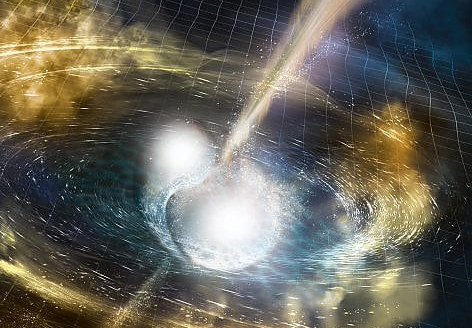 Artificial intelligence, which is increasingly pervasive in every area of our lives, could become a decisive tool also for future multi-messenger astronomy challenges in not too many years’ time. With a work recently published on Nature Computational Science, a research group of the Virgo Collaboration, at EGO European Gravitational Observatory,has proposed an approach called ‘multi-modal’, which is used in many artificial intelligence (AI) applications that can integrate information and signals of different kinds, such as images, sounds, text. The achievement is of great interest when one considers that in the coming decades, telescopes and antennas on Earth and in space will increasingly be able to make coordinated observations and record signals of different kinds generated by the same cosmic phenomenon in parallel: electromagnetic waves from radio waves to very powerful gamma-ray bursts, but also gravitational waves, neutrinos and other cosmic particles.
Artificial intelligence, which is increasingly pervasive in every area of our lives, could become a decisive tool also for future multi-messenger astronomy challenges in not too many years’ time. With a work recently published on Nature Computational Science, a research group of the Virgo Collaboration, at EGO European Gravitational Observatory,has proposed an approach called ‘multi-modal’, which is used in many artificial intelligence (AI) applications that can integrate information and signals of different kinds, such as images, sounds, text. The achievement is of great interest when one considers that in the coming decades, telescopes and antennas on Earth and in space will increasingly be able to make coordinated observations and record signals of different kinds generated by the same cosmic phenomenon in parallel: electromagnetic waves from radio waves to very powerful gamma-ray bursts, but also gravitational waves, neutrinos and other cosmic particles.
To date, there has been only one observation of this type, which took place on 17 August 2017, when the gravitational signal emitted by the fusion of two neutron stars captured by the LIGO interferometers in the United States and Virgo in Italy, and the subsequent confirmation of an observed gamma-ray burst from the Fermi satellite, made a multi-messenger observation campaign possible for the first time, which involved over 70 telescopes and observatories all over the planet. With the next rounds of observations from LIGO and Virgo, and even more in the future with the Einstein Telescope in Europe and the Cosmic Explorer in the U.S., together with electromagnetic telescopes such as CTA or the Webb Telescope, just put in to orbit, parallel observations of gravitational waves, gamma rays and possibly neutrinos could become routine, with the possibility of detecting more than one multi-messenger event per day.
Of course, this prospect opens to demanding challenges related to the computational aspects and the near-instantaneous sharing of data and results from research groups and institutions around the world on a single computing platform.
The research work was supported by COST (European Cooperation in Science and Technology) and the EU ESCAPE project.





